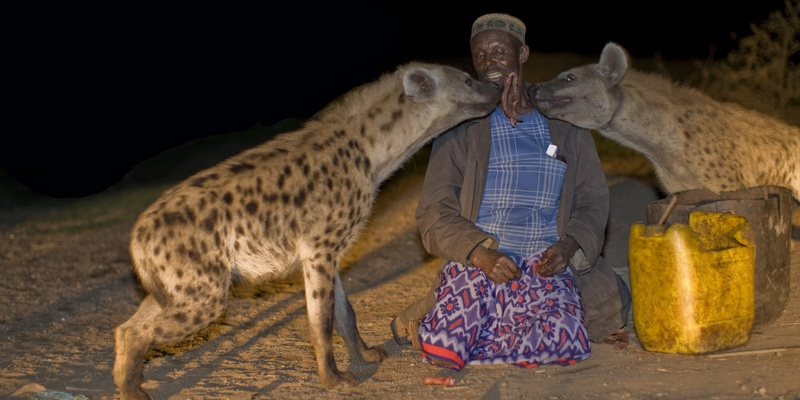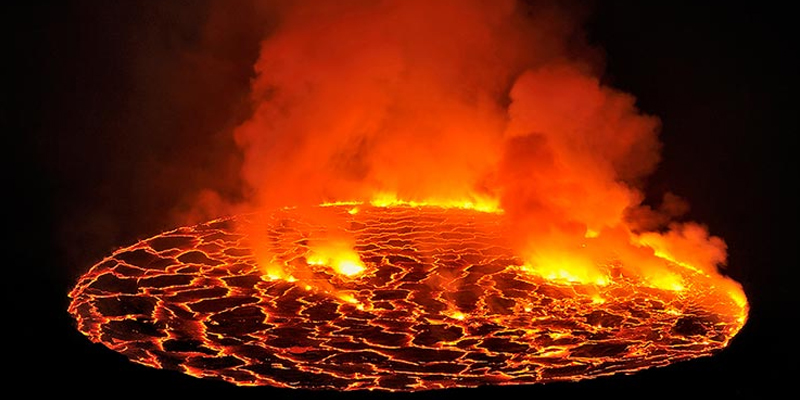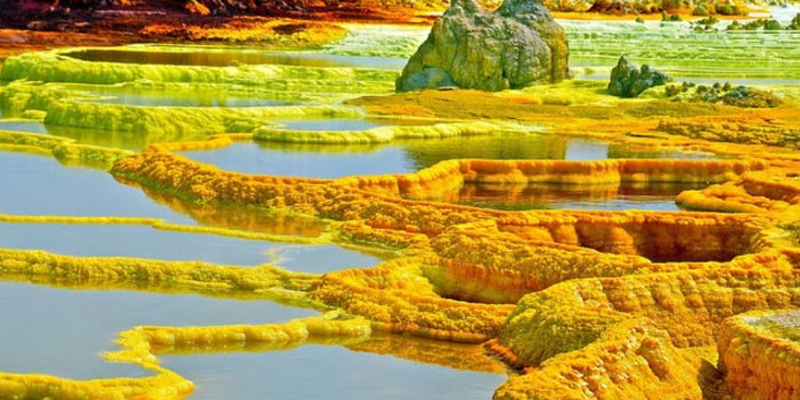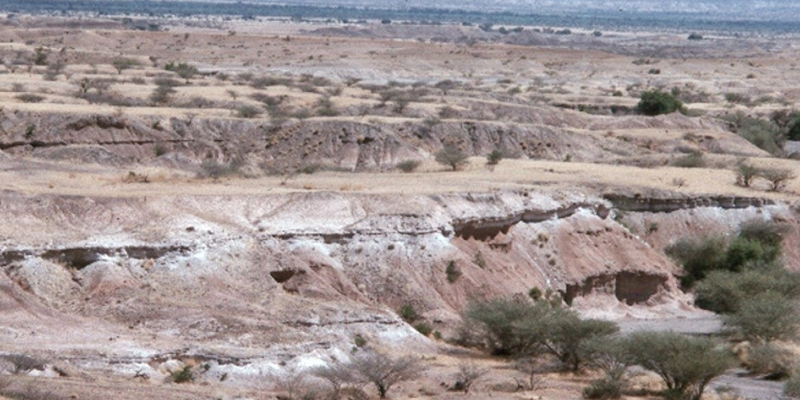Harar is one of the most impressive Ethiopia’s historic destinations pulls remoteness and ancient history as part of the long and colorful existence of the country, Ethiopia. Located strictly East of Ethiopia it has survived since the late first millennium AD being a strong hold of Islam. Happen to be a strong Muslim sultanate, Harar has been ruled by seventy-two successive Imams since its formation i.e. 900s AD till Mid 1500s AD through which time quite unique, strong and authentic Muslim tradition was created. It for long time had long trade relation with the Mediterranean and Arab world and religious interaction with the Middle East over Indian ocean and red sea which pays a great deal of contribution for its Economic and especially religious growth.

One of the gate the walled city of Harar
Today, Harar, next to Mecca, Medina and Jerusalem is one of the main Muslim pilgrim sites in the world. Harar’s most determined attraction, the old and walled town of Harar, was particularly established in 1540’s following the downfall of the Imams’ rule with the defeat of the strongest Imam who ruled Harar. The Long and destructive war launched by this Imam, locally named Ahmed the left handed, to the Christian Kingdom and its gradual failure forced the town residents to build a great wall around the town to protect themselves from any possible attack from surrounding tribes. In this walled and old town, more than 90 mosques are built and are still service active. And with all its uniqueness, the town is known by locals as “Jegol”, a name everybody notices. It also worth a visit to the unique attraction of Harar, also could be mentioned a special tradition of just a selected family member in Harar, to feed the wild Hyenas in a daring close to mouth close manner. It gives the glimpse that Harar’s people friendly enough to domesticate wilds.

Hyena man feed a wildhyena at Harar.
House styles and interior decorations are unique to Harar. The house of the 19th-century French poet, Arthur Rimbaud, is one of the most preserved in this town. Every house in Harar has almost the same inside partitions and all are colorfully decorated with traditional utensils.
Bale Mountains National Park is 2,400 square kilometers (1,488 square miles) in area, covering a wide range of habitats and ranging in altitude from 1,500 to 4,377 meters (4,920 to 14,357 feet), southern Ethiopia's highest point. The spectacular Harenna escarpment running from east to west divides the area into two major parts. To the north is a high-altitude plateau area, formed of ancient volcanic rocks and dissected by many rivers and streams that have cut deep gorges into the edges. In some places this has resulted in scenic waterfalls. Bale mountain national park is the largest area of Afro-alpine habitat in the whole of continent. It gives the visitor opportunities for unsurpassed mountain walking, horse trekking, scenic driving and the chance to view many of Ethiopian’s endemic mammals, mainly the mountain Niyala and Ethiopian wolf, and birds, such as the Thick-billed Raven, watled ibis, Blue-winged Goose, and Rouges.
The vegetation here varies according to altitude. Around Dinsho, in the north, there are grass riverine plains, bordered by bands of bushes, particularly sagebrush and St. John's wort. Wild flowers, such as lobelia, geraniums, 'red-hot pokers', and Alchemitta, form carpets of colour. Higher up the mountains heather appears either as small bushes or as mature trees.

The gaint lobelia, afro alpine vegetation at the bale mountain national park
The high Sanetti Plateau, at 4,000 meters (13,120 feet), is characterized by Afro-alpine plants, some coping with the extreme temperatures by becoming small and others by becoming large. The best example of the latter is the giant lobelia; whose stems stand high against the skyline. Wild flowers are many and various, the dominant plant being the Helichrysum, or 'everlasting' flowers. The everlastings can be seen in many forms, but the grey bushes of H. splendidum are most striking, especially when covered with their yellow flowers. The vegetation on the plateau has to contend with tile ludtiy species of rodents found here. The southern part of the park is heavily forested after the land falls away from the: high plateau in a dense heather belt. The heather forest is particularly mature here, draped with many lichens.
The wildlife of Bale includes many endemic species. The park was originally established to protect the mountain Nyala and the Ethiopian wolf.

The endemic Mountain Nyala
The mountain Nyala are best seen in the Gavsav area of the north where they spread out over the grass plains. Other wildlife in this area includes Menelik's bushbuck an endemic subspecies in which the males are a very dark colour, numerous Bohor reedbuck, grey duiker, warthog, serval cat, colobus monkey, and Anubis baboon. The high plateau is noted for the Ethiopian Wolf; whose chestnut-red coat is in strong contrast to the grey vegetation. It preys on the numerous species of rodent found here, the biggest being the giant mole-rat. This subterranean animal, endemic to the Bale Mountains, can weigh as much as one kilo. The forest of the south is so thick that animals are difficult to see, but there are three species of pig here - warthog, bushpig, and giant forest hog. There are also lion, leopard, spotted hyena, and, rarely, African hunting dog, which is normally found in a much more open habitat.
Bale's birds include sixteen endemic species, many of which are easily seen. These include wattled ibis, black-winged lovebird, blue-winged goose, Rouget's rail, and thick-billed raven. Wattled cranes are often seen breeding on the high plateau in the wet season.
Awash National Park is Ethiopia’s oldest national park and one of the most rewarding for nature lovers. Awash is located at the southern tip of the Afar Region, 225 kilometers east of Addis Ababa. The south boundary of the park is formed by the Awash river which swings north soon after leaving the park and eventually disappears into the Afar (Danakil) region. The Park covers an area of 827 square kilometers, most of it lies at an altitude of 900 meters. In the middle of the park is the dormant volcano of Fantale, reaching a height of 2007 meters at its top.
It is one of Ethiopia's most popular and interesting national parks. One of the advantage of the Awash National Park is that it is easily reached from Addis Ababa, located on the main Addis-Djibouti highway, which bisects the park. The main road from the town of Metehara leads to the park headquarters and the campsites, both of which are situated near the dramatic Awash Falls where the river enters its gigantic gorge.
The park is traversed by a series of well-maintained tracks, which take in the most spectacular of the many scenic attractions. One of the main features is the Fantale volcano, on the southern flank of which can be seen the dark scar of the latest lava flow of 1820. The mountain slopes hold evidence of sixteenth-century habitation, seen as remains of walls and settlements of considerable proportion. The interior of the mountain-top crater — with its wispy white breath of steam vents — is still used by the local people, the Kereyu, for grazing livestock on a seasonal basis.
Another feature of the park are the hot springs in the extreme north. The water of these springs and rivers is in the region of 36°C (97°F) and is used by the local people to water stock.
The plains to the south of the main road are excellent for animal viewing and are bordered to the south by the Awash Gorge, Plunging 250 meters (820 feet) to the river. The western end of the Gorge is marked by the Awash Falls, which can vary in intensity from a murky reasonable flow to a raging chocolate-coloured torrent, depending on the rainfall and the activity of the hydro-electric scheme above it.
Awash's wildlife reflects its dry nature: The Beisa Oryx inhabits many of the more open areas, and greater and lesser kudu the bushed areas. Summering’s gazelle has distinctive white rumps and are often seen with the Oryx. A small population of the endemic sub-species Swayne’s hartebeest was translocated here and occupy the grass plains. The liny Salt's dik-dik appears frequently under the dry acacia bushes and Defassa waterbuck are seen in the bushy river area. There are two species of baboon — the Anubis and the hamadryas. Though each has very different social structures, they hybridize near the river. Other monkeys are colobus in the riverine forest, and grivet in drier areas. Fan tale crater provides a different habitat, supporting mountain reedbuck and klipspringer. Crocodile and hippopotamus splash in the Awash River and in the cooler parts of the springs and rivers in the north. Lion, leopard, serval, caracal, and wildcat are all seen infrequently.
The birds are numerous, more than 300 species on record. The campsites are an excellent place to sight birds and It is the excellent place for the bird lovers to see diversified of bird species such as: Greenwood-hoopoes, red-and-yellow barbets, bee eater, bustard species, secretary, Fish eagles, tawny eagles, lanner and pygmy falcons, immense lammergeyer and etc.

Yangudi Rassa National Park is located in the Afar Region, its 4730 square kilometers of territory include Mount Yangudi near the southern border, with altitudes from 400 to 1459 meters above sea level. Sandy semi-desert and wooded grassland cover by bush and thorn thickets the majority of the park's area. This national park was proposed to protect the African Wild Ass. Recently, the Wild Ass went extinct in Yagundi Rassa. However, there is a small population in the adjacent Mile-Serdo Wild Ass Reserve (8,766 km²). Large animals native to the park include Beisa Oryx, Soemmering's gazelle, gerenuk and Grevy's zebra.
The park is in a major flyway for migrant birds’ species like the Terek Sandpiper, Common Sandpiper, Redshank, Woodchat Shrike, Lesser Grey Shrike, Black Cap and Ortolan Bunting coming from the northern hemisphere from September to January. More than 200 birds have been recorded here. Of these, no less than 23 Somali-Masai Biome species and two globally threatened species, namely, the Lesser Kestrel and Pallid Harrier are known to occur in the park. This protected area also has 36 species of mammals including Wild Ass, Beisa Oryx, Dorcas Gazelle, Hamadryas Baboon, Bat-eared Fox, Black-backed Jackal, Striped Hyena and Aardwolf.

The Danakil Depression lies at the triple junction of three tectonic plates and has a complex geological history. It has developed as a result of Africa and Asia moving apart, causing rifting and volcanic activity. Erosion, inundation by the sea, the rising and falling off the ground have all played their part in the formation of this depression. Danakil (Dallol) is at the northern-most extension of the Great Rift valley - the largest geographical feature in Africa and the only such feature easily visible from the Moon by the first Americans to walk there. Because it's below sea level it seems to trap all the heat. Sedimentary rocks such as sandstone and limestone are uncomfortably overlain by basalt which resulted from extensive lava flows. Colorful hot brine springs and fumarole deposits are found in the Dallol area with some areas that are more than 116m (328ft) below sea level. There are hot yellow Sulphur fields among the sparkling white salt beds.

Erta Ale active volcano in Danakil depression
With more than 30 active and dormant volcanoes, the Danakil Depression is a geological marvel. In stark contrast to the cool, temperate Ethiopian highlands, it is one of the lowest, driest, and hottest places on earth. It boasts records including the hottest average annual temperature (48º C/118º F in the dry season) and lowest point (155m/509 fit below sea level) on the African continent. But don’t let this deter you from visiting Danakil as the trip is full of adventure and surely one you will never forget.
The Danakil truly is one of the most unique geological areas on earth. A strange and mysterious landscape - scattered with noxious hot springs, frozen black-lava flows, and massive salt basins left over from ancient lakes – it is one of the most tectonically active places on the planet. Erta Ale, the region’s most-visited and active volcano, has maintained a permanent lava lake (one of 5 on the earth) for the past 120 years! If you are looking for an almost extra-terrestrial experience, the Danakil Depression is the place to come.

Beautiful colour of sulpher in Danakil Deserte.
The Afar inhabitants – a nomadic people – lead camel caravans for hundreds of kilometers across the unfriendly landscape. They cut salt blocks from the dried lakebeds and sell them in towns far away. For the intrepid traveler, the Afar region will surely be an unforgettable adventure.
The Lower Awash valley
It (also called the Afar Depression) is a geological depression caused by the Afar Triple Junction, which is part of the Great Rift Valley in East Africa. The Middle Awash is an archaeological site along the Awash River in Ethiopia's Afar Depression. A number of Pleistocene and late Miocene hominid remains have been found at the site, along with some of the oldest known Olduwan stone artifacts and patches of fire-baked clay, disputed evidence of the use of fire. Chimpanzee and human lineages are thought to have split around this time, somewhere between 5 million and 7 million years ago.
The region has disclosed fossil specimens of the very earliest hominins, that is, the earliest of the human clade; and it is thought by some paleontologists to be the cradle of the evolution of humans, Middle Awash, Hadar. One of these rare locations where many hominid fossils have been found is Hadar, Ethiopia. The Archaeologist discovered in 1974 a female hominid fossil” Lucy “in Hadar in the Awash valley, dated up to 3.2 million years old.

Many scientists visit this location each year. Hadar has the right type of geology to preserve hominid fossils because the ground is rich in animal fossils dating about 3 million years.
In fact, one of the most famous fossil discoveries was made by Donald Johan son and Tom Gray in late 1974 and was found to be one of the most significant fossil sites in the world. It was later excavated from the site. He named it Lucy (Lucy's Story, 2007). This find soon lead the search in Ethiopia and because of her there has been more searches in that area which have led to more discoveries.
+251918040958
historicabyssinia@gmail.com
teodrosnegesse16@gmail.com